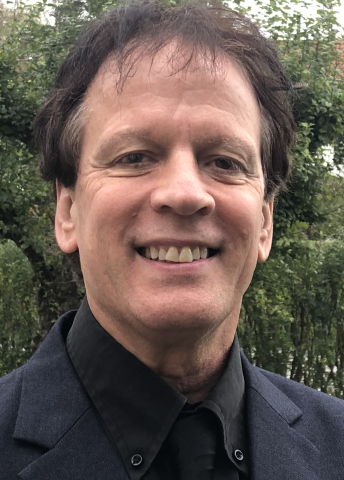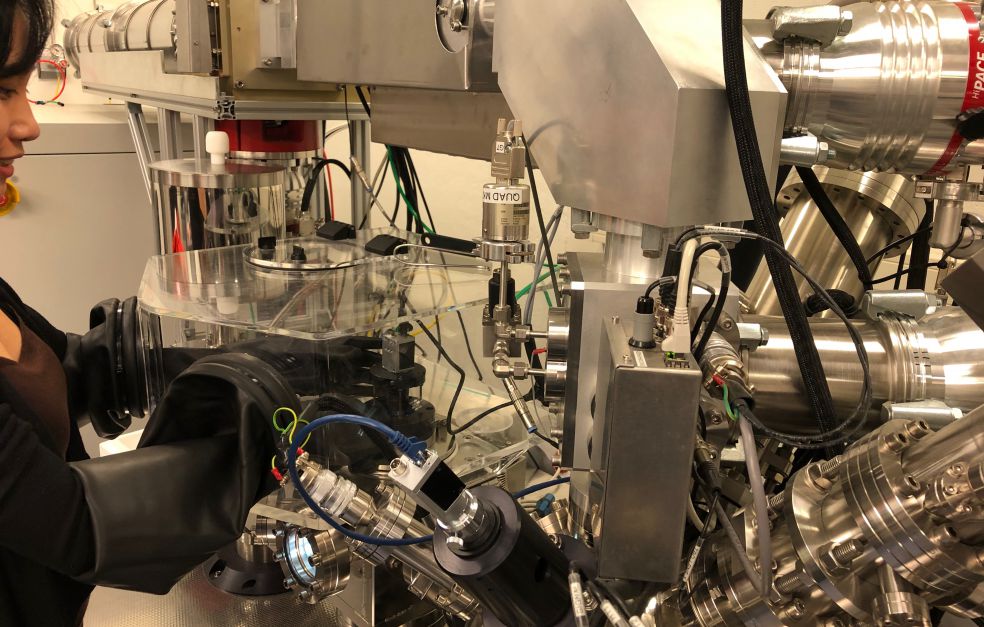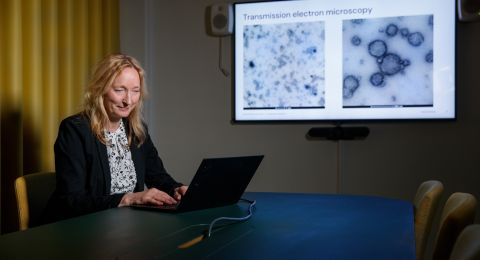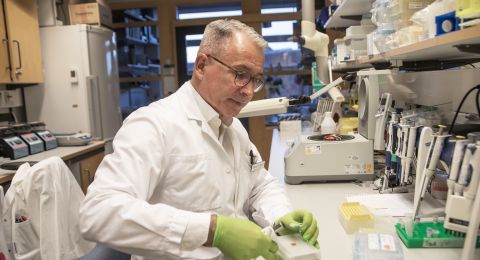New technology enables scientists to film how neurons in the brain communicate and build networks. The high-definition images may reveal how memory and learning are initiated at the cell level. This knowledge may pave the way for new therapies for diseases such as Alzheimer’s.
Andrew Ewing
Professor of Analytical Chemistry
Wallenberg Scholar
Institution:
University of Gothenburg
Research field:
Primary focus on understanding how signal substances are used to communicate at cellular and subcellular level
It is a hectic time for Andrew Ewing, professor of analytical chemistry at the University of Gothenburg. Research on the brain is making great strides thanks to the development of ever better imaging techniques and analytical methods. One of the difficulties is choosing between the many promising research ideas.
“The tricky part is that I’m interested in everything, and I’m working with good people, who keep me busy the whole time.”
One current project aims to image and analyze the structure and dynamics of “stress granules”: large, floating aggregations of RNA-binding proteins formed when the cell is under stress.
“Stress granules are of great interest because they might be linked to all neurodegenerative diseases.”
Understanding how memories are created
But the emphasis of Ewing’s research is on other chemical processes in the brain.
“One driver is to understand what happens when our short-term memories are created. We’re not studying the memories themselves; we’re focusing on the communication in the brain that initiates the memory process.”
Every time we feel, think and remember, signal substances are involved. A signal substance is a molecule that chemically transmits a neural impulse from one neuron to another in the nervous system. The signal molecules are transported in miniature packages called vesicles, which must be delivered to the right cell at the right time. The brain has to handle billions of impressions every second.
“A number of basic bodily functions are dependent on flawless vesicular transport,” Ewing says.
Disruption of vesicular traffic can impact metabolism and neural signaling, potentially contributing to diseases such as diabetes or Alzheimer’s. This is one reason why the spotlight has been turned on the part played by these vesicles.
The advent of new technology and new methods enables researchers to study the vesicles at higher and higher resolution. One method used – NanoSIMS mass spectrometry – involves separating molecules from each other and analyzing their mass and charge.
Using super-resolution (STED) microscopy, the researchers are able to follow the processes of life inside living cells. The resolution is 50 nanometers – less than one-thousandth of the diameter of a human hair.
Another method is electrochemical cytometry, used to measure the contents of individual vesicles.
Surprising findings about vesicles
Important discoveries concerning the vesicular transport system were rewarded with the Nobel Prize 2013. But there are still huge gaps in our knowledge. The latest findings published by Ewing’s team have attracted much attention. It used to be assumed that the vesicles released all their chemical contents in their meeting with the recipient cell. This “all or nothing” principle must now be re-evaluated.
“We have made surprising discoveries showing that the vesicles do not release the whole package – often only parts of it,” Ewing explains.
The researchers have managed to examine and measure the signal substance content of individual vesicles in living cells. They have compared the content with the quantity of signal substance emitted, enabling them to ascertain how much signal substance is released from the cell.
Further analyses have established that the amount of signal substance varies in different situations. This hitherto unknown regulation is thought to have a crucial impact on mechanisms controlling our learning and memory.
The discovery is seen as a milestone, challenging received wisdom. Ewing himself has had to reassess – something he thinks is a valuable experience.
“I often say the best researcher is a researcher who has the strength to change their opinion in light of new findings.”
Along the way, Ewing and his team have found an important variant of signal transmission, termed “open and closed” or partial exocytosis. In this mechanism the vesicle opens a pore, then it opens more as if opening all the way, before closing it again.
“Our findings also suggest that the vesicles also pick up substances when they release their ‘packages’.”
New studies are under way to analyze how cells can dynamically regulate the contents of the vesicles, and the quantities to be released, which may in turn impact the strength of the synapses in the brain. The brain is plastic, and possesses an amazing capacity for change and adaptation. It is now possible to capture and study this plasticity right down to an individual vesicle.
“The numerous research findings our team has produced over the past few years are a direct result of the Wallenberg Scholar scheme. I see the funding as a ‘life saver’. We have been able to acquire equipment to perform advanced experiments that would not otherwise have been possible.”
Potential therapies
It is hoped that it will one day be possible to control the transport of signal substances in the brain by regulating individual vesicles and how they open.
“Tools to understand processes impacted by diseases and completely new pharmaceutical possibilities are within our reach.”
Around the corner awaits a greater insight into the mechanisms underlying neurodegenerative diseases like Alzheimer’s and Parkinson’s – diagnoses that are becoming increasingly common in an ageing population.
“It would be our most important contribution to humanity if we could solve the problem of dementia, as well as hugely beneficial to society if we could help the elderly to live fuller and more independent lives as senior citizens,” Ewing says.
Text Nils Johan Tjärnlund
Translation Maxwell Arding
Photo Thi Ngoc Nhu Phan, Magnus Bergström





